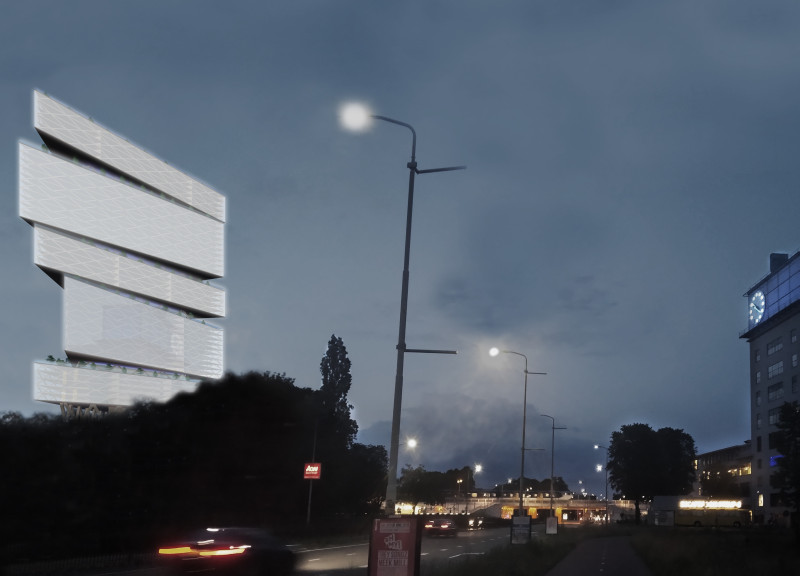5 key facts about this project
The Truss Tower in Eindhoven showcases a modern approach to the area’s industrial roots. Located in Strijp-T, which was once a power plant site for Philips, the tower reaches a height of 150 meters. It is strategically positioned near the Klokgebouw train station, serving as a landmark for travelers arriving from various cities in the Netherlands. The design concept draws inspiration from the historical context of Eindhoven and mimics the angular profiles of traditional truss roofs typically seen in factories.
Design Concept
The architectural concept integrates elements of the city's past while promoting modern functionality. The triangular floor plan features sections that rotate to align with the surrounding street layout. Three of these sections follow the street pattern of Strijp-T, while the other two correspond with the nearby neighborhoods of Strijp-S and Strijp-R. This arrangement encourages the building to fit naturally into the urban landscape.
Materiality
Solid timber and glue-laminated timber are the main materials used in the construction of the Truss Tower. This choice reflects a focus on environmental sustainability. The timber offers a warm feel and a visual contrast to the urban surroundings. It gives the structure a sense of being connected to nature, promoting an experience that is both inviting and grounded.
Public Spaces
A key feature of the Truss Tower is its five outdoor terraces, which are landscaped with trees and raised garden beds. These terraces create spaces for gathering and relaxation. They invite both residents and visitors to engage with the environment around them while providing opportunities to take in views of the vibrant city. This design encourages community interaction and a connection to the natural elements in an urban setting.
Sustainability Features
The tower incorporates several sustainable features, including a system for harvesting rainwater to irrigate its gardens. Additionally, the facade is equipped with transparent solar panel cells that produce electricity to power the building. These elements reflect a commitment to reducing the environmental impact and align with Eindhoven’s identity as a progressive city focused on innovation in technology and design.
The structural design reveals a network of visual elements that accentuate its unique profile, reinforcing its presence in Eindhoven’s urban landscape while paying homage to the city’s industrial heritage.





















































